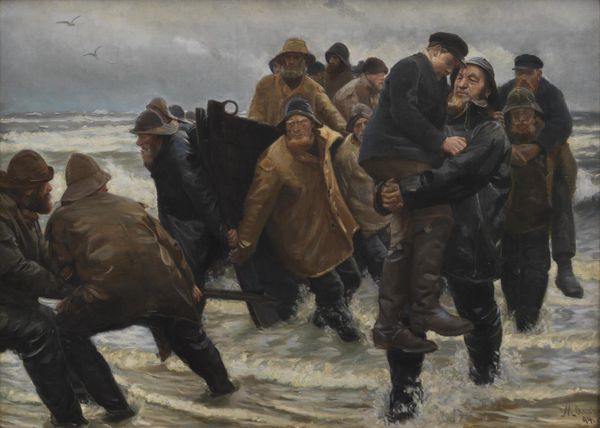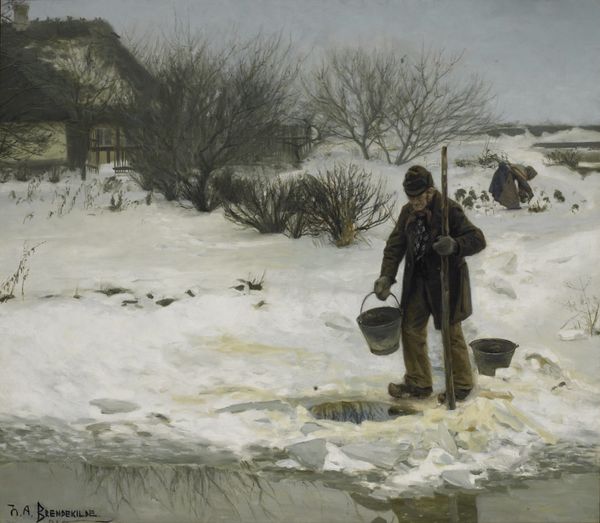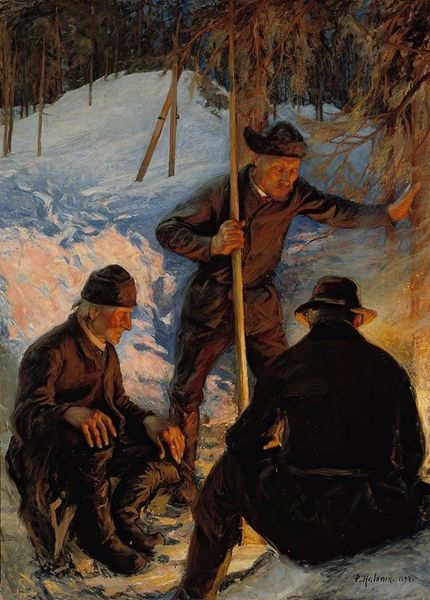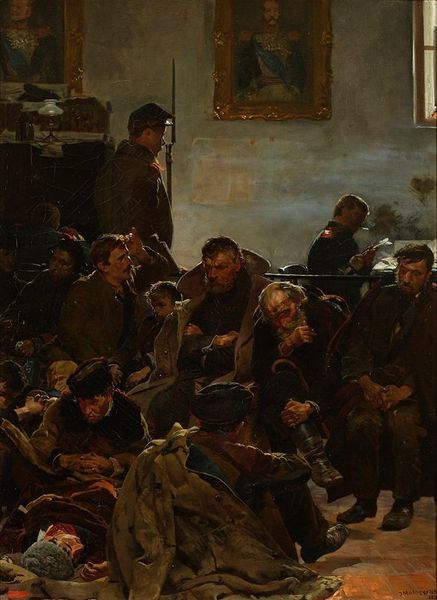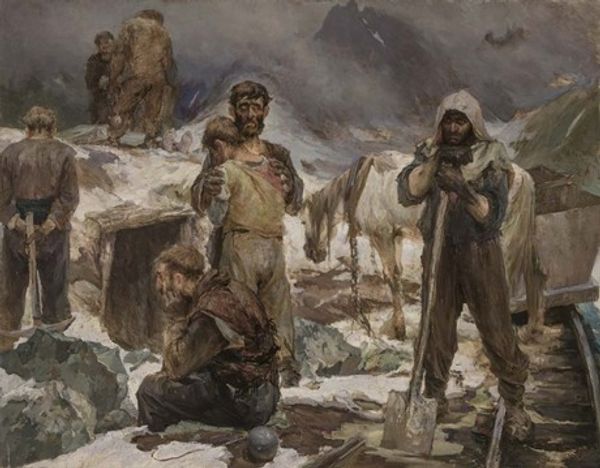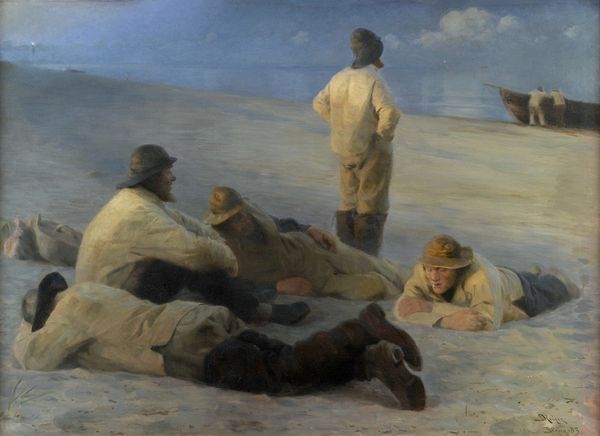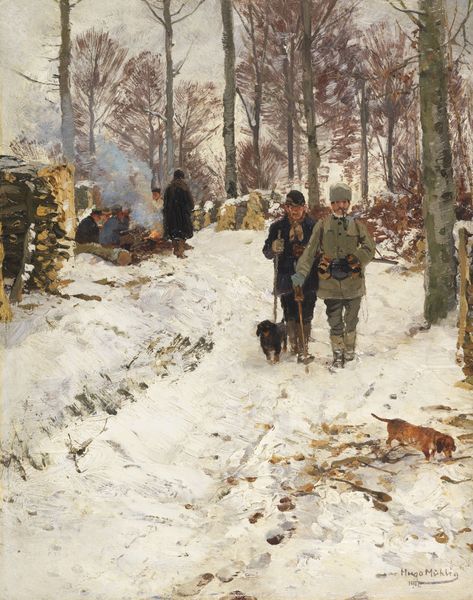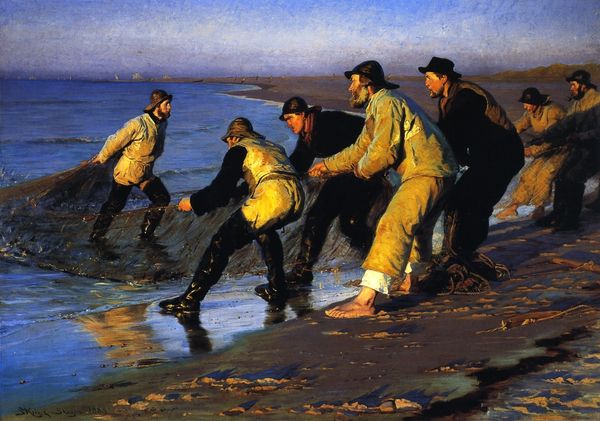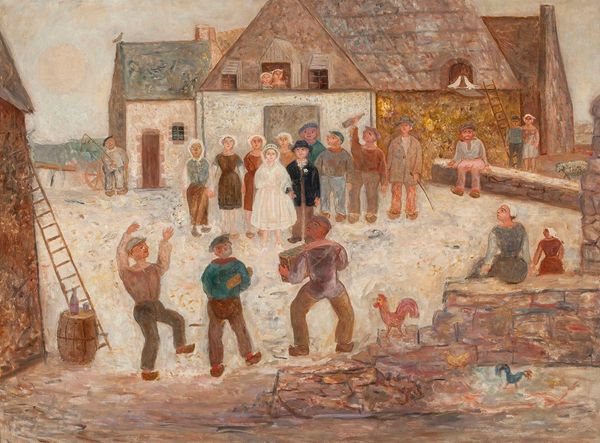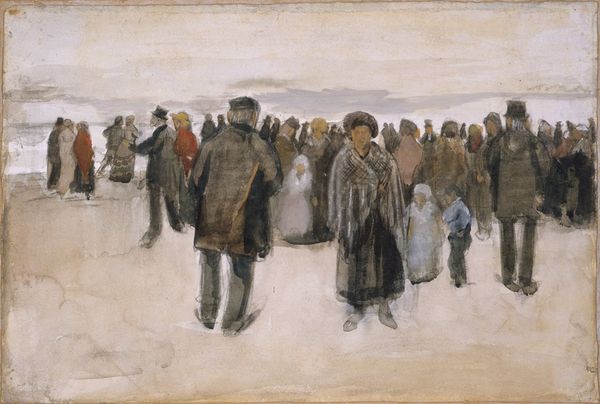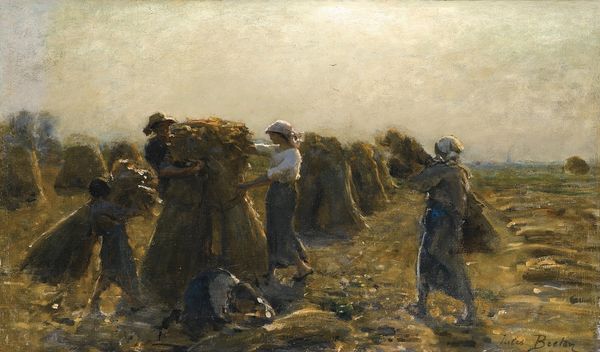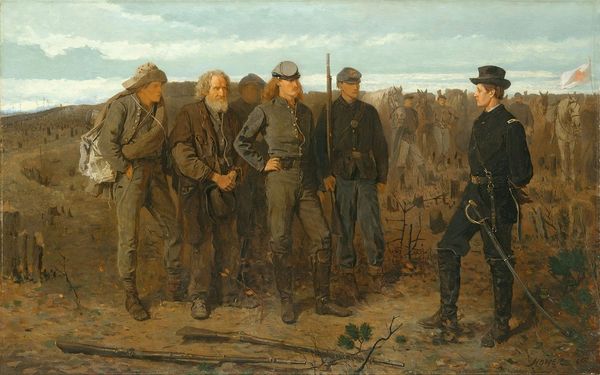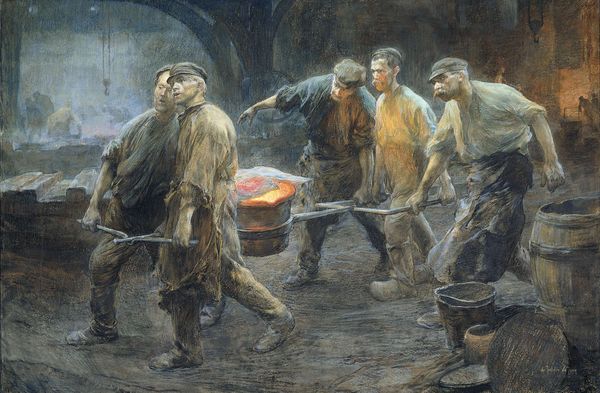
Dimensions: 171 cm (height) x 221 cm (width) (Netto), 195.3 cm (height) x 243.2 cm (width) x 10.5 cm (depth) (Brutto)
Michael Ancher painted "The Lifeboat is Taken through the Dunes" using oil on canvas. The rough canvas texture is visible, reminiscent of the harsh conditions and the physical labor depicted. The artist's application of paint is deliberate, the strokes capturing the weight and texture of the fishermen's clothing, the grainy sand, and the heavy boat. Ancher has skillfully depicted the physical exertion involved in moving the lifeboat across the dunes, with the group of men working together to transport the boat across the terrain to the ocean. This scene reflects the social context of the coastal community, where maritime skills and teamwork were essential for survival. The painting stands as a testament to the collective effort and resilience of these individuals. By emphasizing the materials, making, and social context of "The Lifeboat is Taken through the Dunes," Ancher elevates the everyday struggles of these fishermen, blurring the lines between fine art and craft.
Comments
statensmuseumforkunst almost 2 years ago
⋮
The low, dark winter skies and densely filled picture plane deepens the sense of intense concentration, of heroic grandeur.The painting's compositionThe waves on the bluish-black ocean seem to force their way up into the snow-covered dunes which echo the tumbling waves by lifting up the lifeboat, prefiguring the launch of the boat and how it will break through the heavy surf. Two intersecting diagonals lead the fishermen through the dunes and out towards the vessels in distress. This movement eventually takes the spectator’s gaze back to the starting point: the shouting fisherman, cropped as in a photographic snapshot, making an appeal to someone outside the picture.A tale of the heroic fishermenWith this painting Michael Ancher continued his tale of the heroic fishermen of Skagen. An epic on a grand scale, the narrative opened with the question Will He Weather the Point, went on to a happy preliminary end, as it were, with A Crew is Rescued and was finally concluded in The Drowned Fisherman.A contemporary history paintingPreviously, history painting was a vehicle for the depiction of great and good deeds done by mythological heroes and men who made history. Common people only made an appearance as rank and file soldiers or in anonymous crowds. The works of Michael Ancher, however, represent the culmination of counteracting endeavours to place ordinary men as the main characters of contemporary history painting.
Join the conversation
Join millions of artists and users on Artera today and experience the ultimate creative platform.
statensmuseumforkunst almost 2 years ago
⋮
Abrupt cropping, motifs reminiscent of documentaries, and snapshot-like effect – a photographic gaze – appear in many works in this room, particularly in this painting. Two intersecting diagonals lead the fishermen and the spectator through the dunes and out towards the ship in peril. The movement takes our gaze back to the starting point, the shouting fisherman. As in a photographic snapshot, he has been cropped, appealing to someone outside the image. History painting used to be a vehicle for depicting great and good deeds, presenting mythological heroes and history-makers as ideals. The common people were delegated to the parts of footsoldiers or anonymous crowds. Michael Ancher marks the culmination of an opposite endeavour: To insert common people as protagonists of a contemporary history painting.
